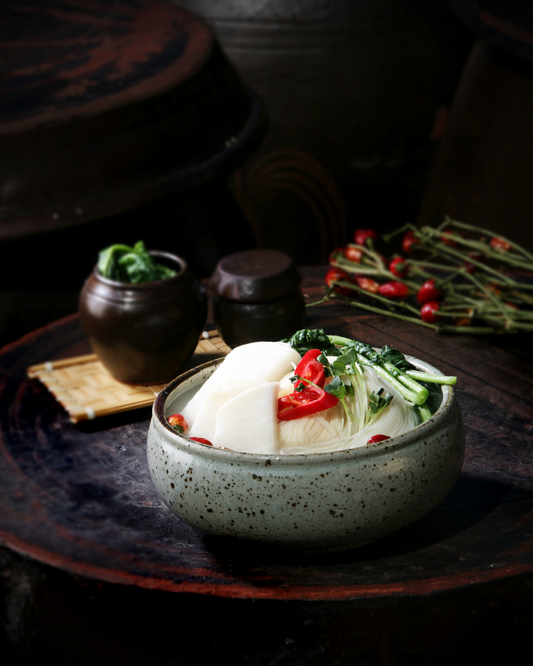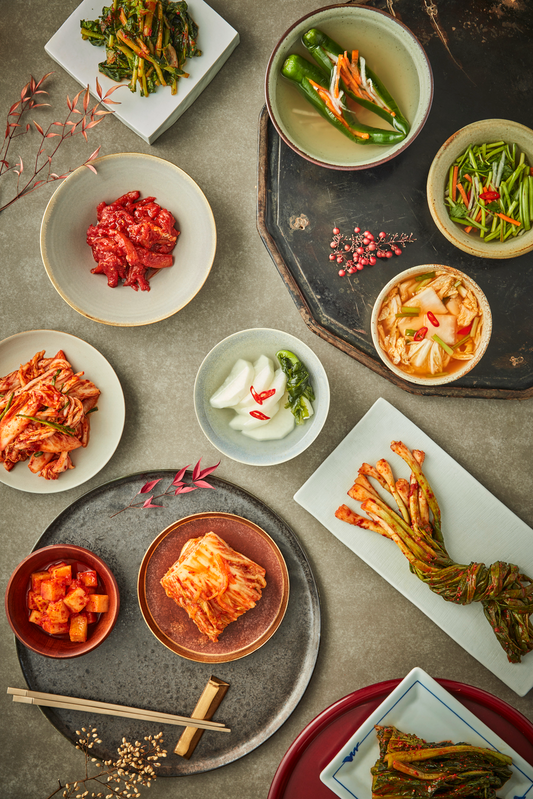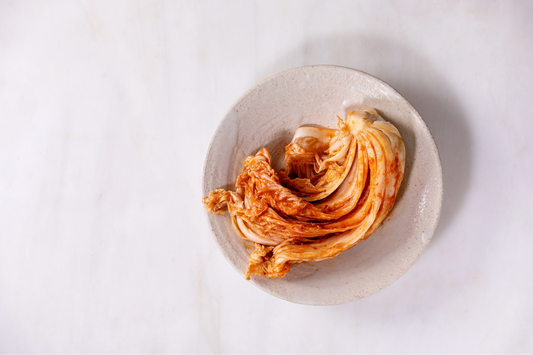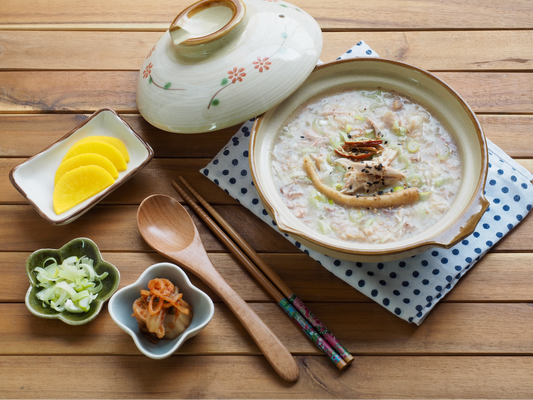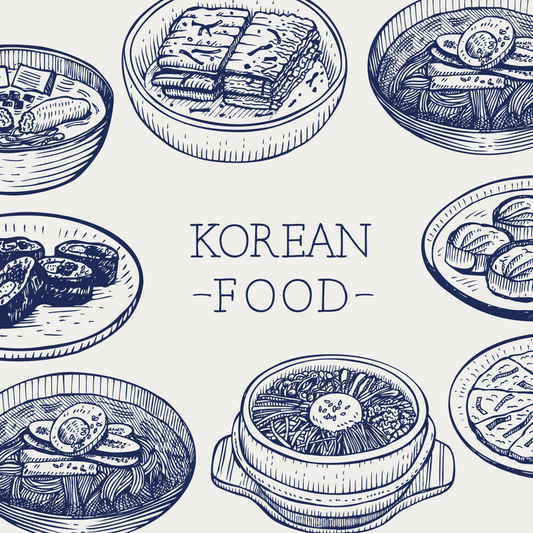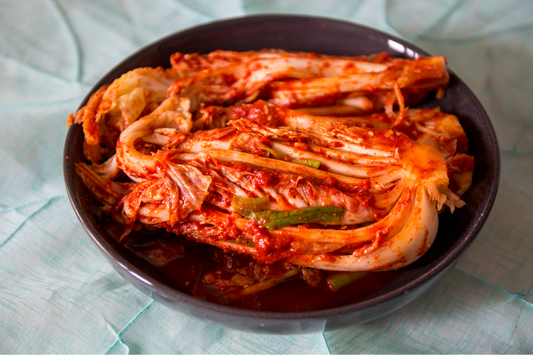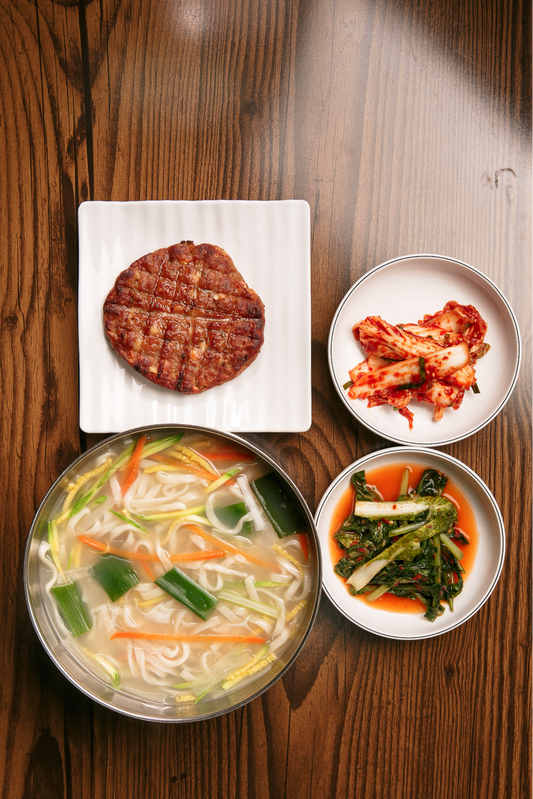Have you ever wondered about kimchi's rise to global fame? How did this simple fermented dish earn a spot on UNESCO’s Intangible Cultural Heritage list? How did it spark international "kimchi wars"? The story of kimchi is a rich tale of evolution, global debates, and ultimate recognition as a world heritage food. This traditional Korean staple has fermented over thousands of years, from ancient times to global tables today. Its history is as complex as its flavors. This article will explore kimchi's cultural background, the kimjang tradition, and its transformation into a Korean identity symbol. Join us as we dive into the history of kimchi and see how it became a key part of global cuisine.
Key Takeaways
- The depth of kimchi history mirrors the cultural identity of Korea, enriched over thousands of years.
- Kimchi's cultural significance is internationally recognized, joining the likes of kimjang in UNESCO’s list of Intangible Cultural Heritage.
- The "kimchi wars" highlight the intense geopolitical disputes over the food's origin and its economic implications.
- With over 200 variations, kimchi showcases Korea's culinary diversity, from the widely popular baechu kimchi to the vibrant flavors of kkakdugi and chonggak kimchi.
- The transition from traditional Korean food to a cherished healthy food item globally marks the dramatic change for kimchi in the past 40 years.
- Understanding the evolution of kimchi offers insights into global heritage food and its changing landscape in light of cultural influences and international politics.

Ancient Kimchi
Kimchi is a key part of Korean food history. It's famous for its special taste and health perks. Ancient kimchi started during times when fermented foods were essential for surviving cold winters. Originally, it was made with radishes. Later, napa cabbage and other ingredients were added.
Fermented Foods in Ancient Korea
In the past, Koreans created ways to keep their food fresh using fermentation. They turned to nature to ferment veggies, making lactic acid-fermented vegetables. This made their vegetables last longer, taste better, and more nutritious. These foods were important in the winter.
Early Kimchi Preparation Methods and Ingredients
The first recipes for early kimchi were simple but smart. Salting helped keep the veggies ready for fermentation. Later, garlic, ginger, and fermented seafood were added for more flavors. These methods, improved over time, didn't just preserve food. They also became a key part of Korean culture.
Korean kimchi stories are not just history. They show a tradition of great culinary innovation. Over time, as recipes improved, kimchi became a symbol. It shows Korean culture's ability to adapt and thrive through food traditions.
Kimchi During the Joseon Dynasty
The Joseon Dynasty stands tall in Korean culinary history. It's known for introducing a range of kimchi variations we still enjoy. Understanding joseon dynasty kimchi helps us appreciate Korea's cultural and food heritage.
Kimchi Preparation Methods During the Joseon Dynasty
In the Joseon era, they took great care preparing kimchi, influenced by their fermentation vessels. They used earthenware pots called onggi, which helped ferment kimchi perfectly. These pots made the kimchi taste unique and flavorful. Many recipes and methods from this era were recorded in culinary books. These books shared methods using local veggies and special fermentation techniques.

Differences in Kimchi Between Royalty and Commoners
In the Joseon Dynasty, food reflected social status, including royal kimchi versus commoners' kimchi. Royalty enjoyed a variety of ingredients and complex flavors in their kimchi. In contrast, commoners' kimchi was simpler and focused on preserving food. This difference in kimchi types shows the social and nutritional divides of that time.
The Joseon era is key in the history of kimchi, influencing its variety today. Kimchi remains a core part of Korean culture. It represents a time of culinary brilliance and deep cultural values.
Modern Kimchi
The way kimchi has changed from a key part of Korean food to a worldwide sensation is fascinating. The past century has seen big shifts due to the colonial era and wars. These events changed how people make and see kimchi.
Changes in Kimchi During the Colonial Period and Wartime
In the time of colonial rule, kimchi got new tastes from Japan. This era brought different flavors to traditional Korean kimchi. War times made kimchi simpler because ingredients were hard to find. The Korean War pushed South Korea to start big kimchi businesses. This was to feed the soldiers, and it changed how kimchi was made.
Impact of Industrialization and Modernization on Kimchi
South Korea's fast growth changed how kimchi was made. Kimchi refrigerators came into play, keeping fermentation perfect. This time also saw better ways to ferment, making kimchi safer and tastier. Companies now produce lots of kimchi types, trying to please everyone. But, they still respect the original recipes.
These changes helped kimchi survive tough times. Now, it shines in the world market, leading to new food creations. Kimchi keeps getting interesting as it blends with other cuisines.

Global Spread of Modern Kimchi
Kimchi's journey from a Korean staple to an international phenomenon shows more than its success. It shows the power of cultural exchange and globalization. The spread of modern kimchi is tied to South Korea's global achievements. Once a local delicacy, kimchi is now a symbol of Korean culture worldwide.
The Spread of Kimchi Abroad and Its International Popularity
The world loves kimchi thanks to South Korea's cultural milestones. For instance, Yi So-yeon became the first South Korean astronaut. And Psy's 'Gangnam Style' broke records on YouTube. These achievements helped kimchi become popular globally. Kimchi is famous for its rich taste and health benefits. It contains over 800 million immunity-boosting bacteria per gram.
South Korea's economy grew fast in the late 20th century. This allowed for better international trade and more kimchi exports. The country promotes kimchi culture globally.
Kimchi as a Global Fusion Cuisine
Kimchi is now part of global fusion cuisine because of its versatility. It's in dishes like kimchi tacos and burgers, showing the ingredient's flexibility. Fusion kimchi recipes prove its ability to blend with other cuisines. These changes show how kimchi has evolved from its early days. Now, it's important not just in Korea, but all over the world.
FAQ
What are the historical origins of kimchi?
Kimchi comes from ancient Korea, born from a need to keep vegetables fresh. Early methods used salt and fermentation to save radishes and other veggies during cold winters. Over time, it gained new ingredients and techniques, becoming the kimchi we know today.
How did the Kimjang tradition contribute to the cultural heritage of kimchi?
Kimjang is key to kimchi's cultural importance. It's about making and sharing kimchi together, reinforcing community ties. UNESCO recognized it in 2013 for its role in Korean culture. It's about family connections and securing food all year round.
What is the significance of the Codex Alimentarius Commission's standard to kimchi?
Adopted in 2001, this standard ensures kimchi quality and safety worldwide. It's a way to keep traditional recipes true while sharing them globally. These rules help keep kimchi's taste and quality consistent everywhere.
What are the differences between royal and commoners' kimchi?
Royal kimchi, from the Joseon Dynasty, was lavish, with diverse, quality ingredients. It showed high social status through its preparation. In contrast, commoners' kimchi was simpler, focusing on survival. It used what was easily available, emphasizing practical preservation.
How did kimchi change during the colonial period and wartime?
Kimchi's commercial journey began when it was needed to feed troops, especially during the Vietnam War. New production and preservation technologies led to mass production. It introduced the idea of buying kimchi to more people.
In what ways has the industrialization and modernization of Korea affected kimchi?
Modern Korea's changes brought kimchi fridges for perfect storage and fermentation. Korea created space kimchi, bacteria-free, for astronauts. These steps show Korea's balance between tradition and modern needs.
How has kimchi become integrated into global fusion cuisine?
With Korean culture's worldwide fame, kimchi found its place in global cuisine. It's in many fusion recipes, blending Korean tastes with others. This has made kimchi a trend in both health and food, loved by many.
What has driven the international popularity of kimchi?
The "Korean Wave" has helped kimchi gain fans around the world. This includes K-pop and K-dramas, alongside Korean foods. Kimchi's health perks and its unique taste have made it a global favorite.

